The Beauty of Ancash
During training, most of the volunteers were hoping to get placed in Ancash. There were 5 potential regions – Ancash, Junín, La Libertad, Cajamarca, Amazonas – and we didn’t get to choose. Word (and photos) got around that Ancash was full of snow-capped mountains (called ‘nevados), turquoise glacier lakes (called ‘lagunas’), and hikes to your heart’s desire. The rumors were not wrong.
In the 4 months I’ve been here in Ancash (to the day), I’ve experienced a number of breath-taking sights that I want to share. Hold onto your britches because here come some stellar photos:
Up first, Laguna Rocotuyoq
To get to this glacier lake, first it’s a 30 minute combi ride from Caraz, the mid-sized town about 20 minutes from Pueblo Libre (combis are 15-seater vans that are the main means of public transport). You hop off in Marcará, then ask one of the taxi dudes for a ride to the laguna. For about $15 USD, you get a beautiful 1.5 hour drive up the mountain, and step out only a 5-minute walk to the laguna. Once you reach the top of the hill, the turquoise waters and nevado burst into view. This was my first experience with one of Ancash’s many turquoise lagunas, and honestly I wasn’t sure what to expect. I had seen the photos, but truly thought there had to be some photoshop going on. No way could that color be natural, I thought, but indeed it is. From the laguna, you can walk another 45 minutes to the smaller ‘laguna congelada’ or frozen lake. This sits at the base of the nevado, and has huge chunks of glacier ice floating around. More than a couple times, we heard a rumbling in the distance to look up and see a mini avalanche happening at the mountain’s peak. It was amazing how small the movement of snow looked from way down where we were, though to have a noise carry so far.
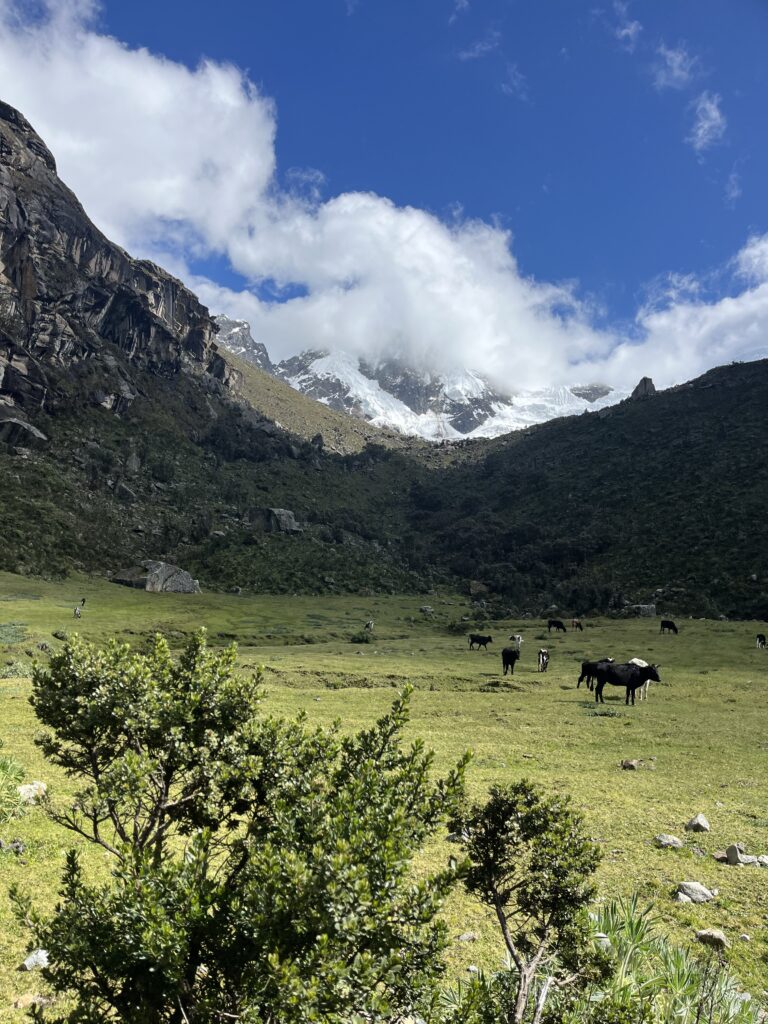
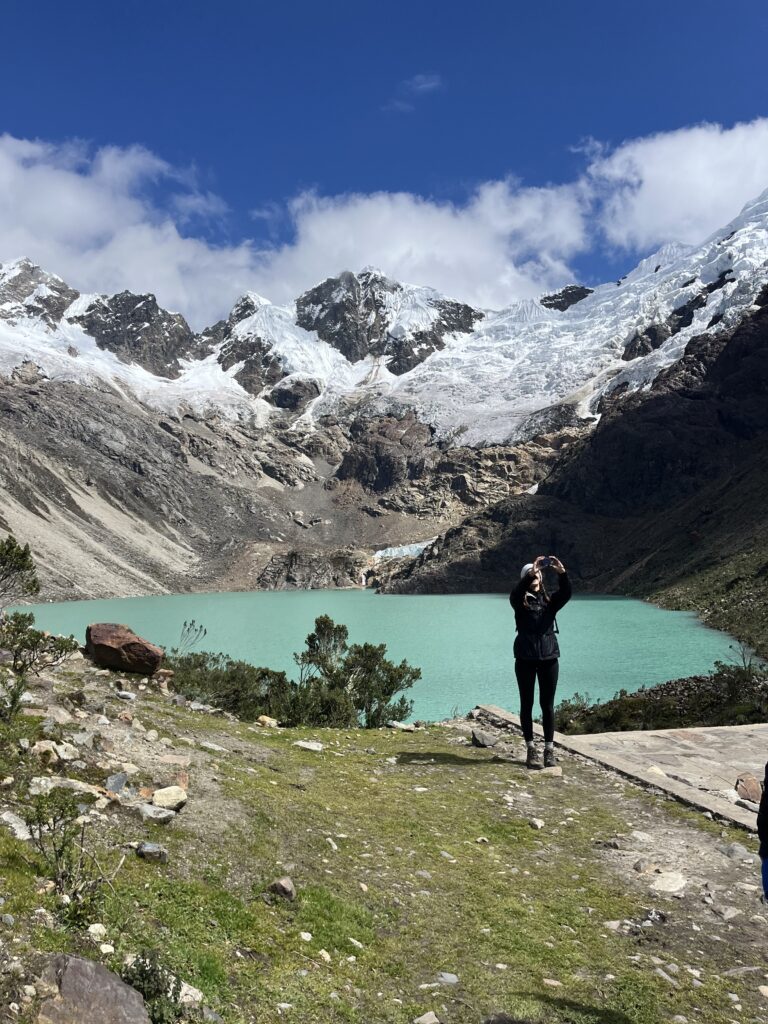
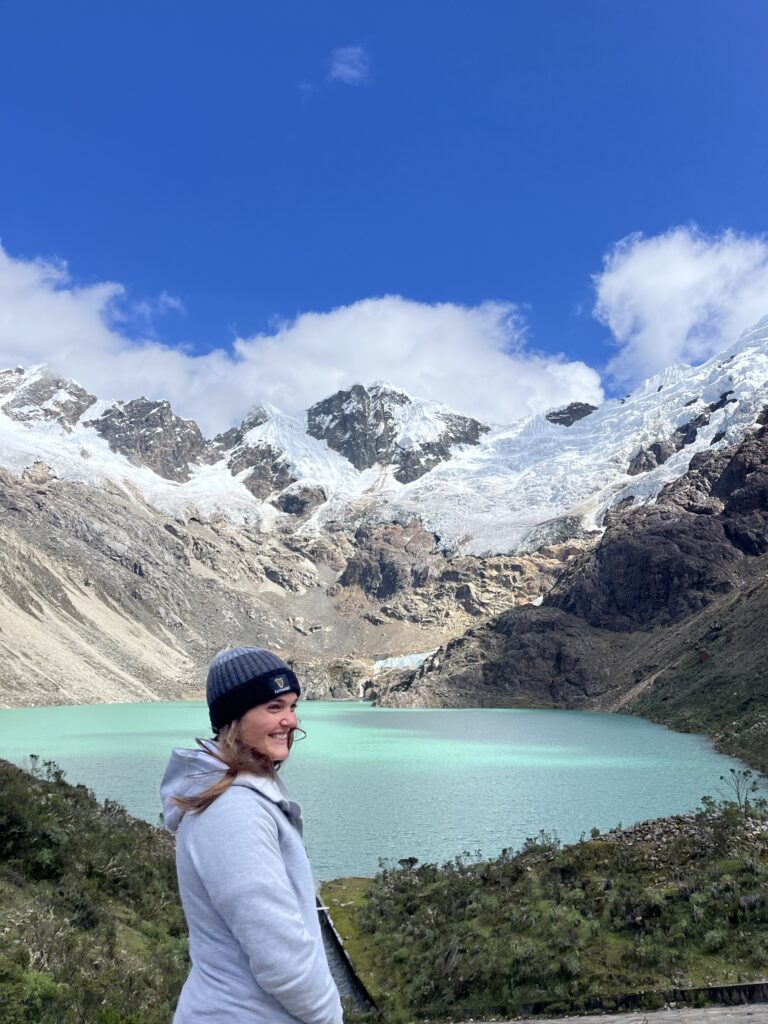
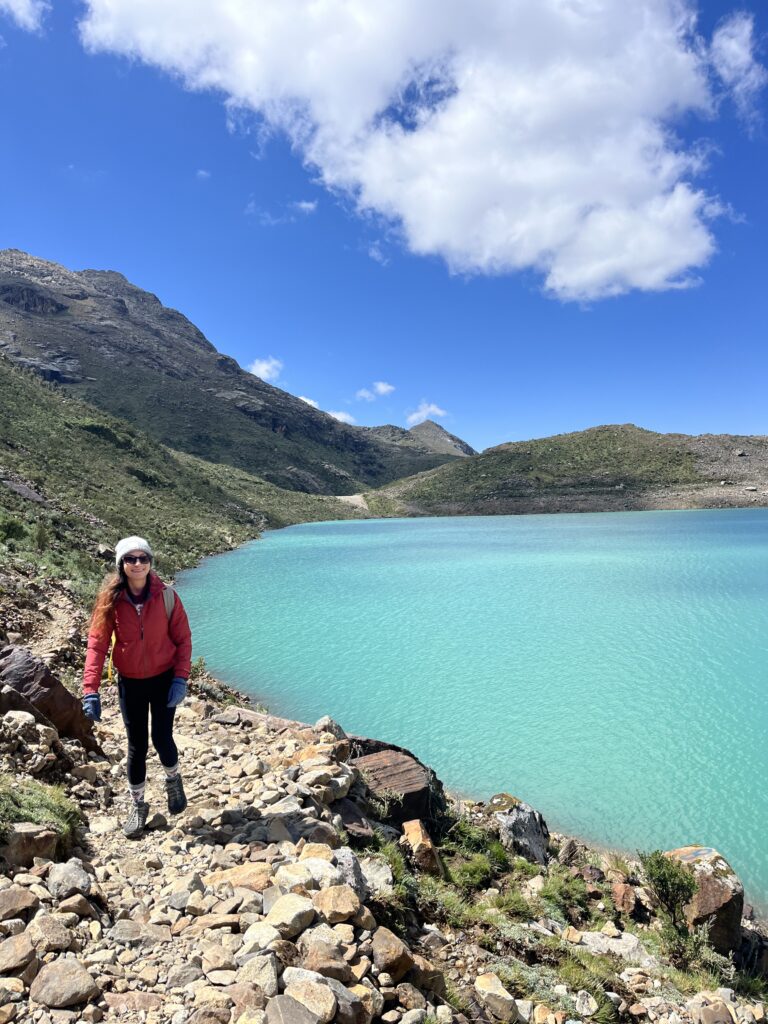
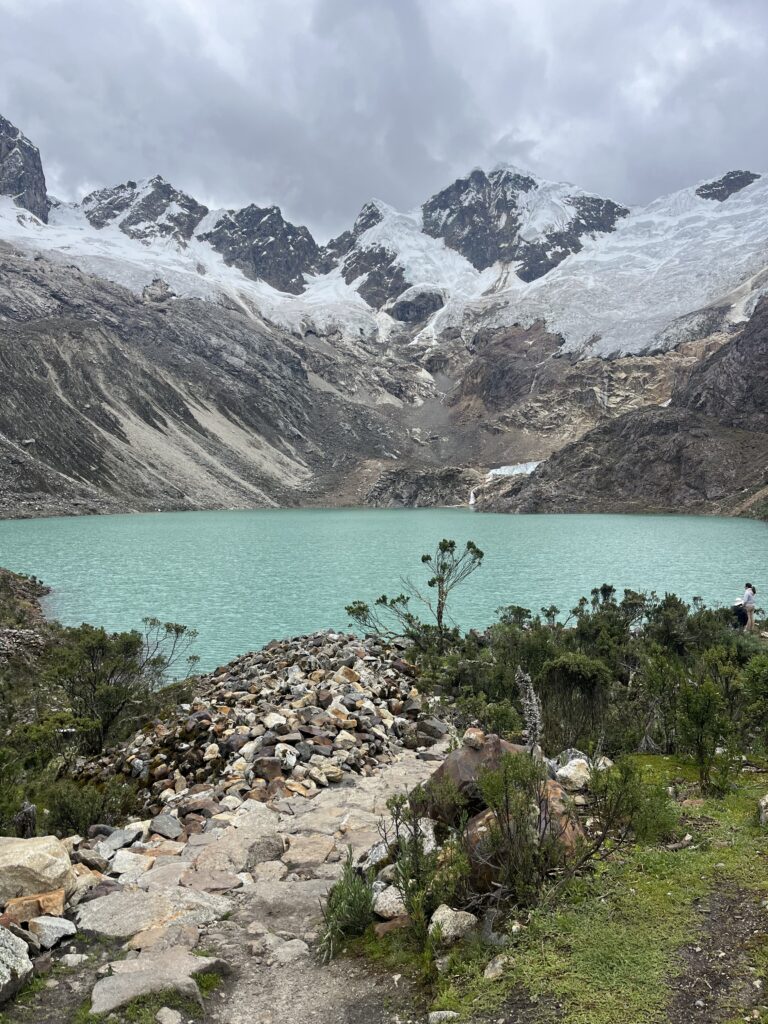
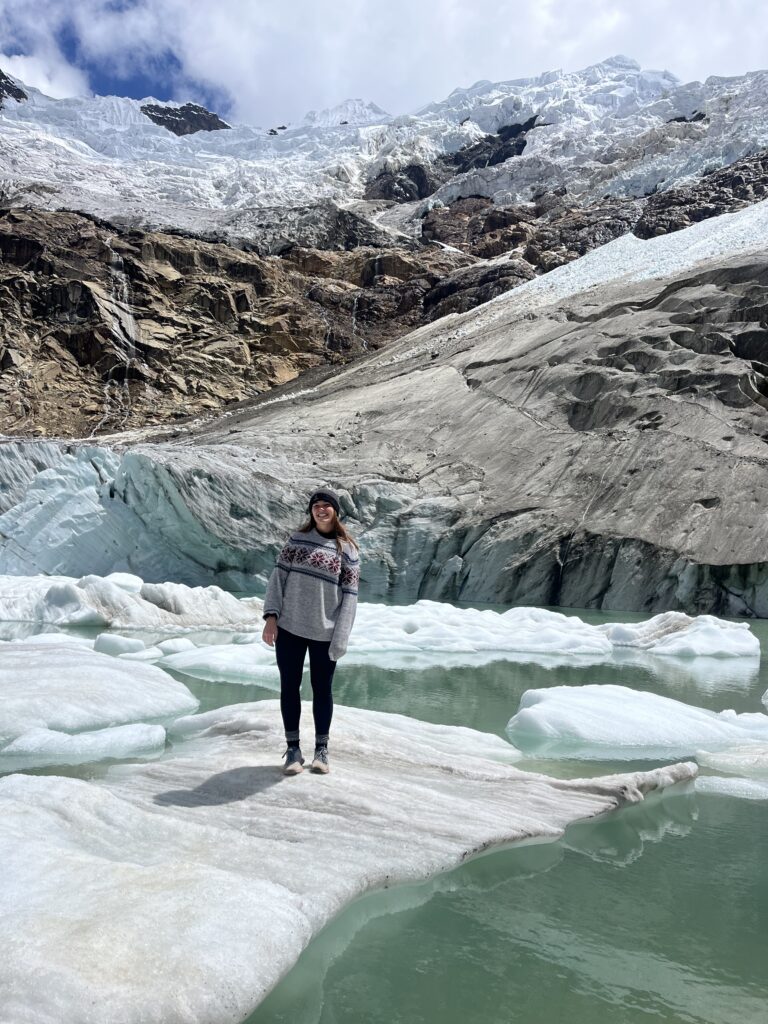
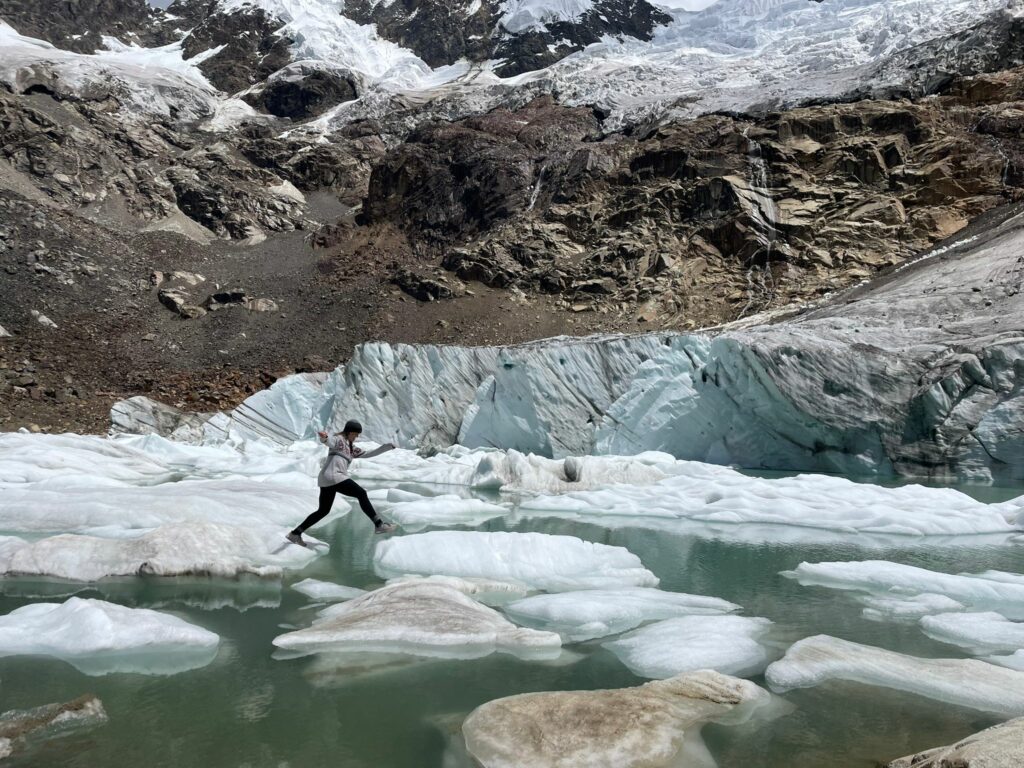
Laguna Radian, My Personal Favorite
I’ve actually gone twice now. The first time, we did it right. Starting from Hauraz, it’s a 20 minute combi ride then a 2 hour hike on a well-marked trail, albeit straight up. It’s tough, but so worth it. The second go ’round, we thought we’d be clever and follow the advice of a Peruvian friend, which we probably won’t do again (in the Peruvian’s defense, it easily could have been a misinterpretation on my volunteer friend’s part). Anywho, what we thought would be a 45 minute hike up to the laguna turned into 4 hours. Not counting the 1.5 hrs it took to come down the original, marked trail. For the 4 hours, we weren’t even on a hiking trail, moreso just the thin paths that locals use to get around. We were never lost, per se, as we saw the mountain way in the distance where we needed to be. Despite the gross underestimation of time, moral stayed surprisingly high.
2 hours or 4 hours, I love this lake. Given the time and steep mountain it takes to get there, there aren’t many visitors. It is surrounded by nature – mountains, trees, grass. And given it is far away from a glacier, the water is (barely) bearable enough to take a dip. I will say that most people don’t swim, but I can’t help hopping in. It’s still freezing enough to take your breath away and come out feeling numb, but the feeling of being in the water, surrounded by all that beauty, is unbeatable.
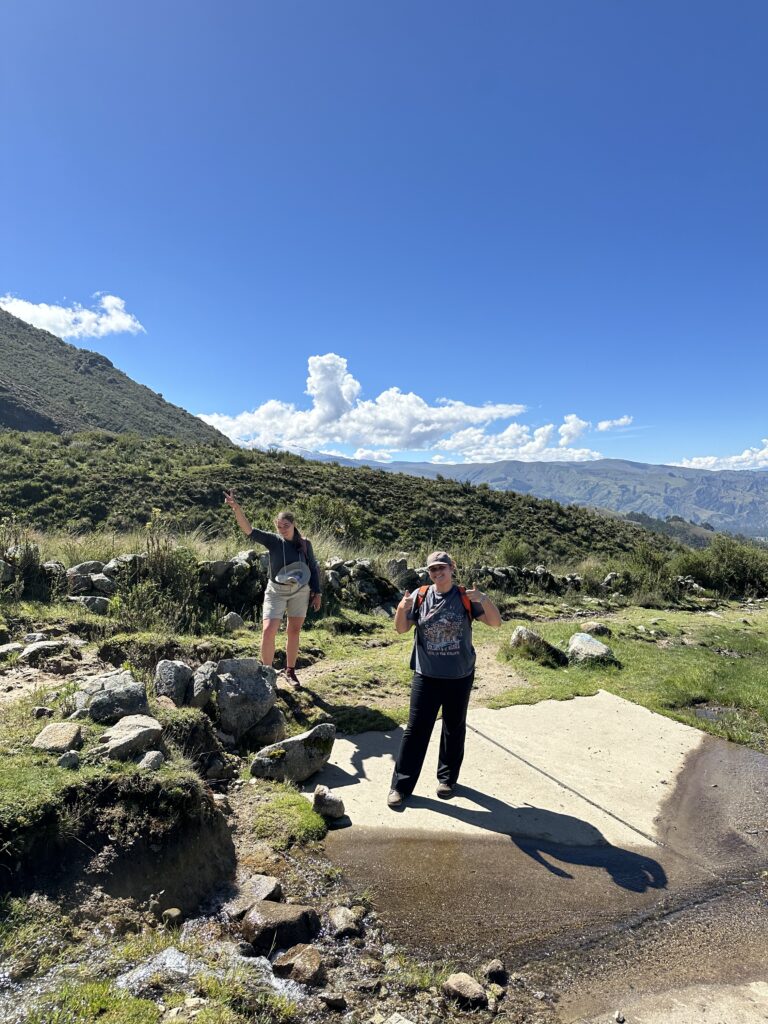
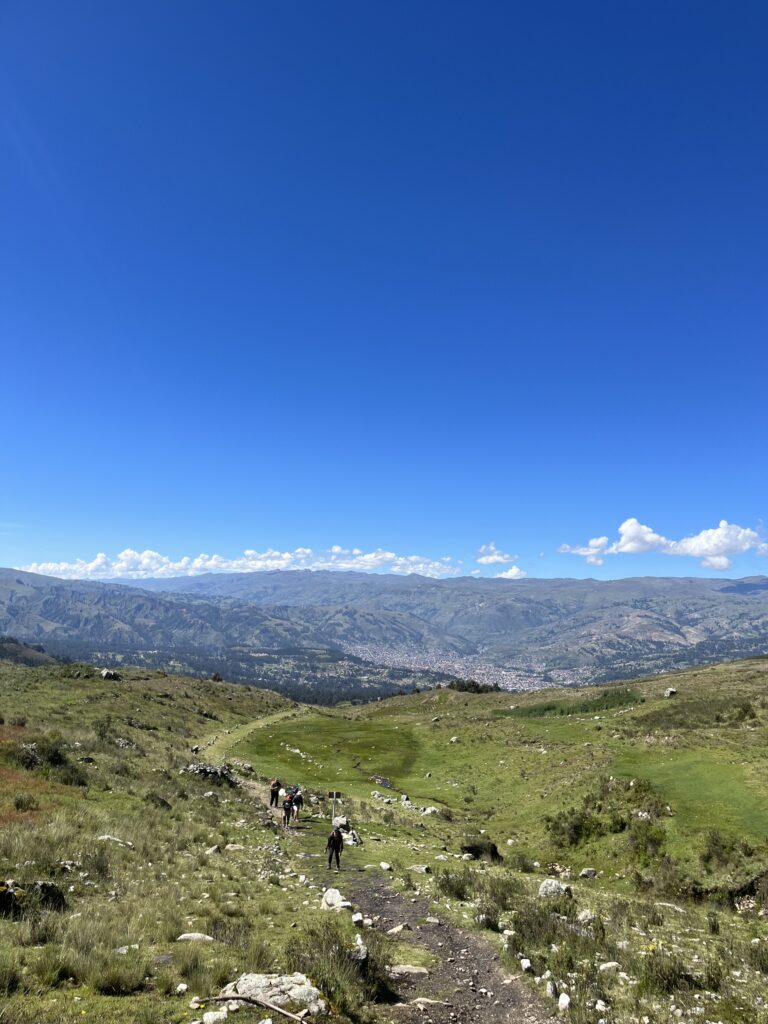
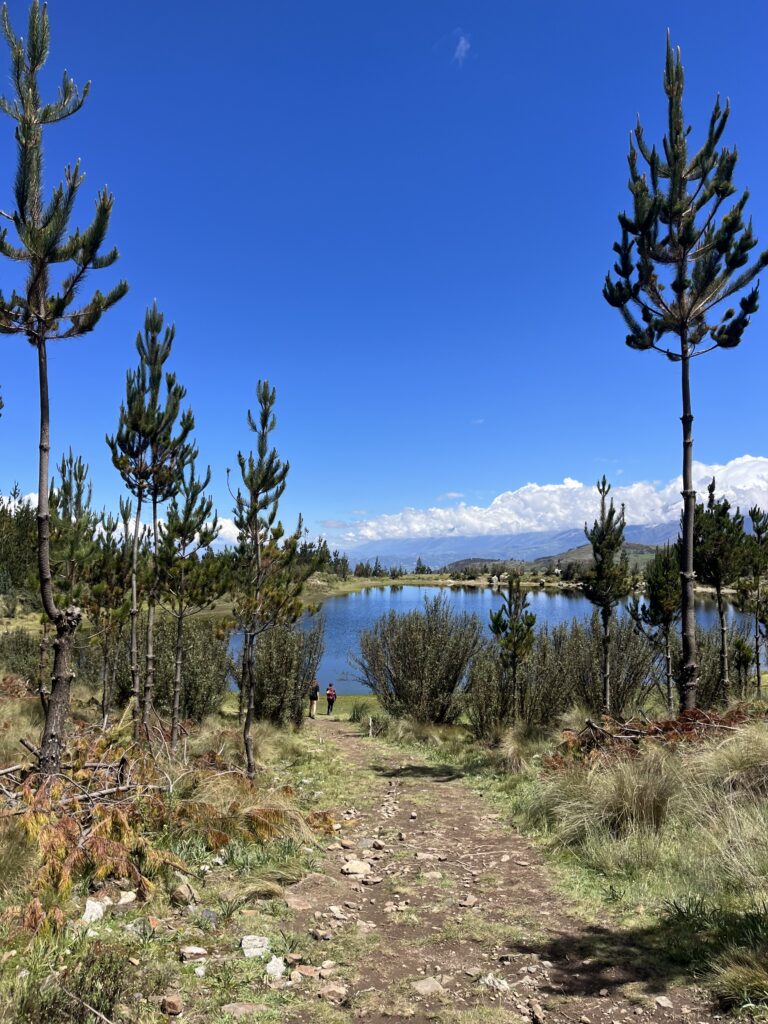
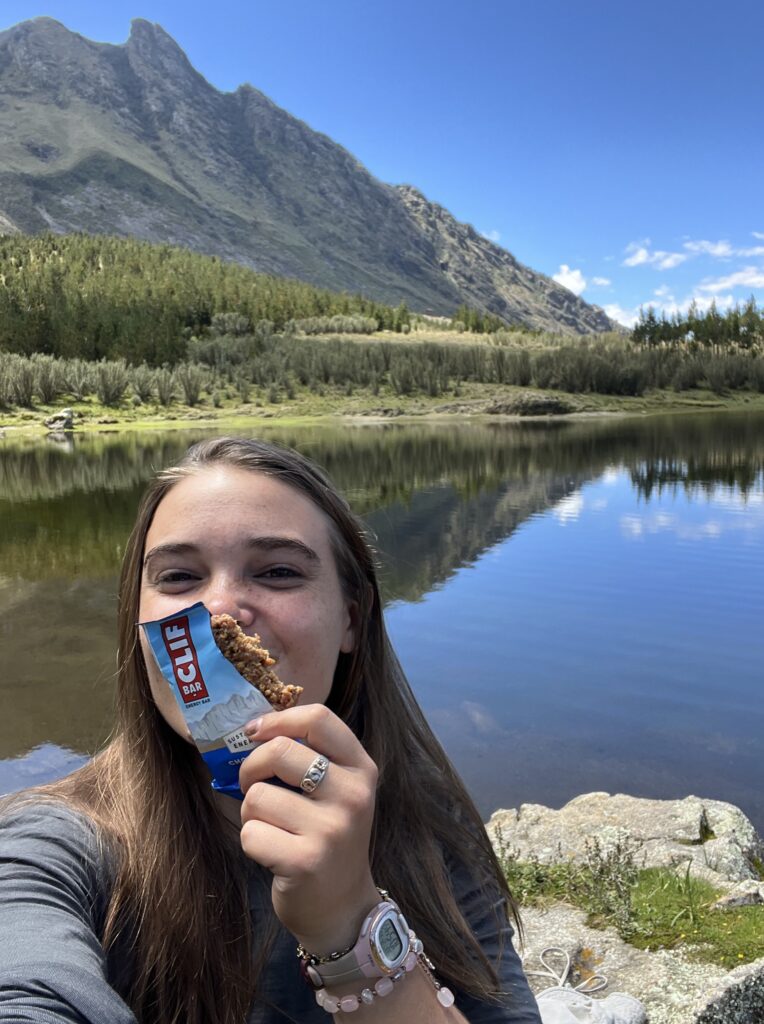
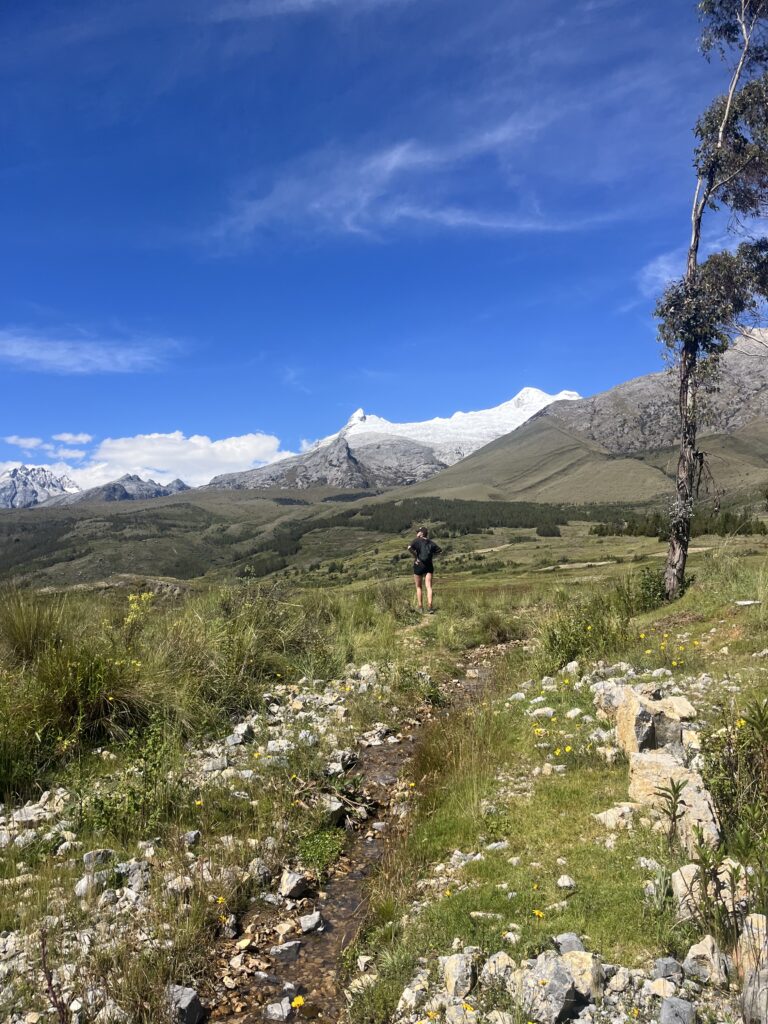
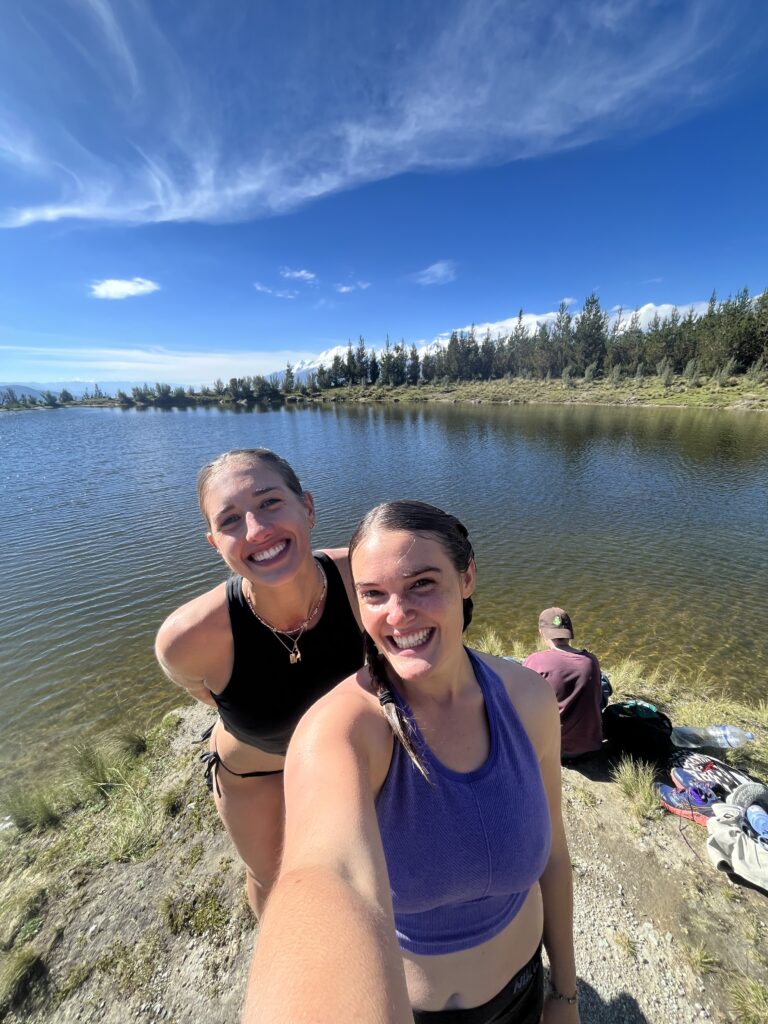
Pastoruri Nevado and Glacier
I will say, this one is a bit more touristy. Against my nature (thanks Ken) the fact that you have to take a tour bus to get to Pastoruri is quite a turn-off. For anyone with the funds and energy, you could go via your own motorcycle or car, but that is too much for us Peace Corps Volunteers. Pastoruri is a glacier sitting at 5,240 meters (or 17,190 feet for us American brains). To get there, it’s about a 3 hour drive from Huaraz, which includes stops to see:
- Los Aguas Gasificadas de Pumapampa – a spring pumping out mineral-rich waters, though we were honestly more interested in the spectacular views of the surrounding mountains (photo 1 below)
- Laguna de Pumapashimi, or the Manantial (Spring) of 7 Colors – a seemingly swampy-looking pond which turns into a beautiful blue-green when the sun comes out, showcasing an amazing underwater shelf that looks straight out of a mermaid movie (photo 2, zoom in if you can)
- The famous Puya raimondii plant, also known as the Queen of the Andes, native to Bolivia and Peru. This pant can grow up to 50 feet tall and has the world’s largest flower spike which appears after 80 long years of growing. (Didn’t take a photo, as it simply wouldn’t do it justice. Google it!)
Once at the foot of the hike to Pastoruri, we made the 30-minute trek (that is a fast time, if I do say so myself). My head was pounding, let me tell ya. It truly felt like someone was squeezing my noggin from the inside, but I did see some folks down for the count, including someone with oxygen tubes up their nose in an ambulance at the trail head (weak). The final destination showcases the immense glacier, which becomes not so immense when you look at the pictures showing how large the glacier used to be. It truly has retreated immensely in the past 2 decades, and that day I could even see it melting away drip by drip.
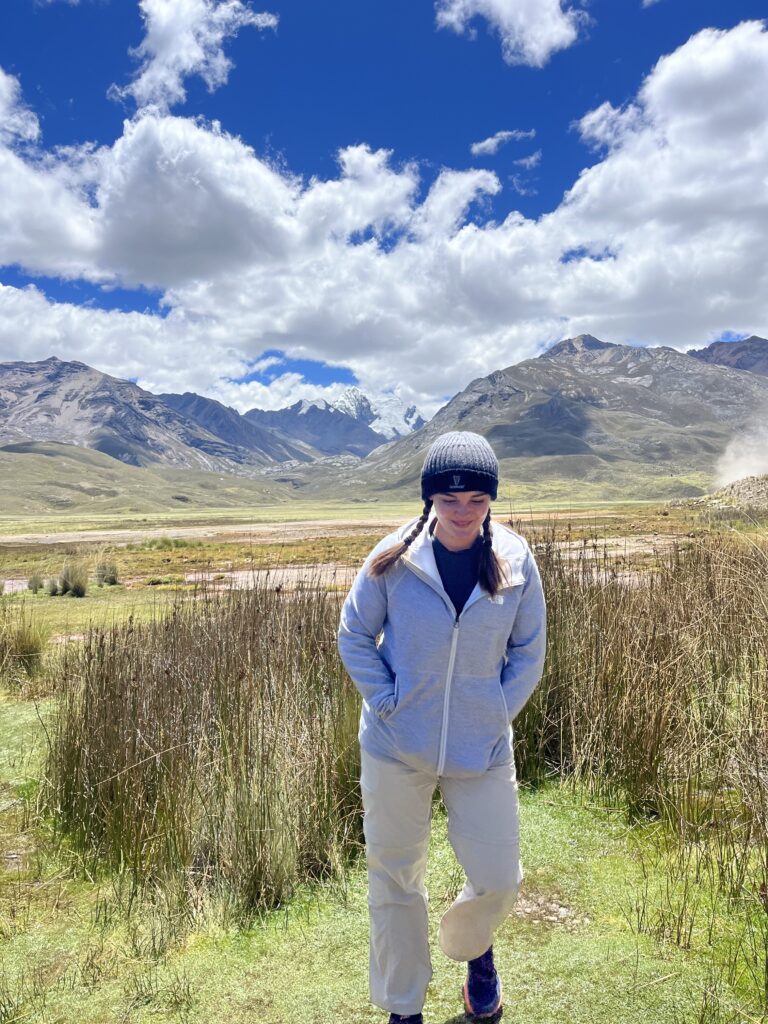
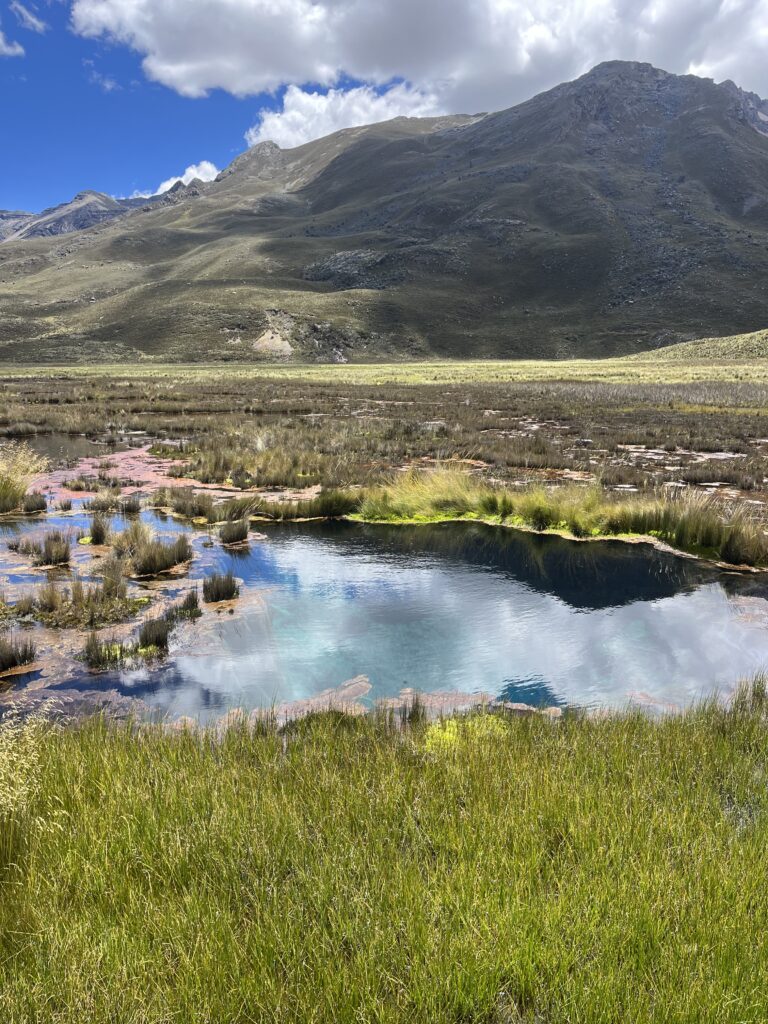
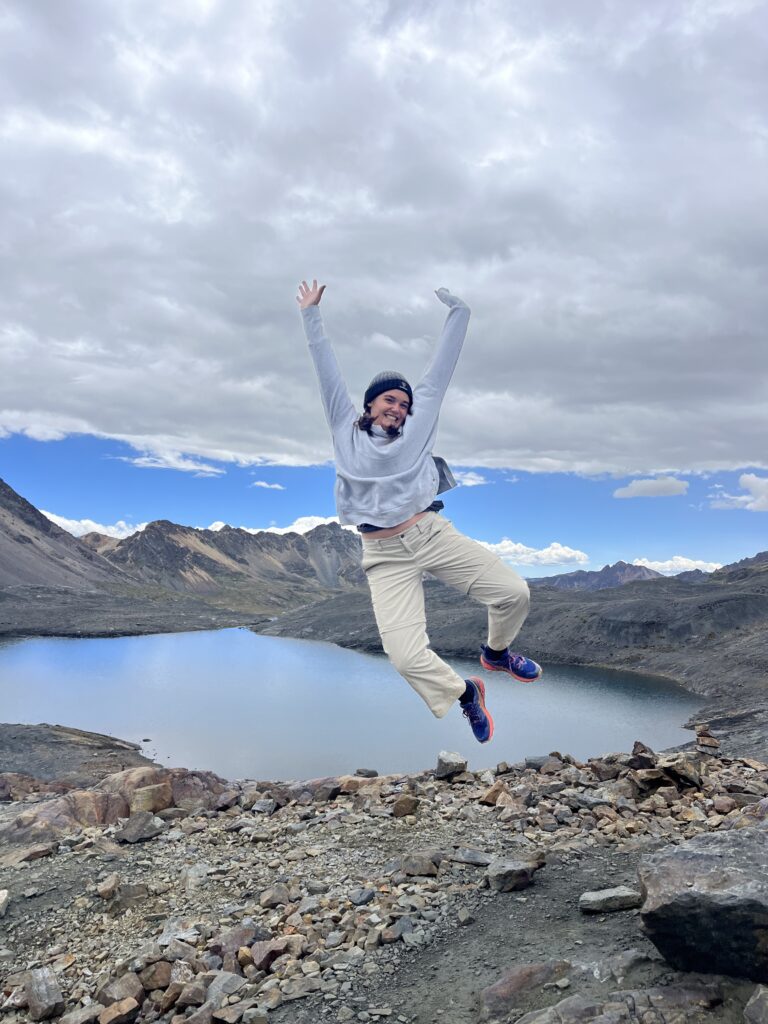
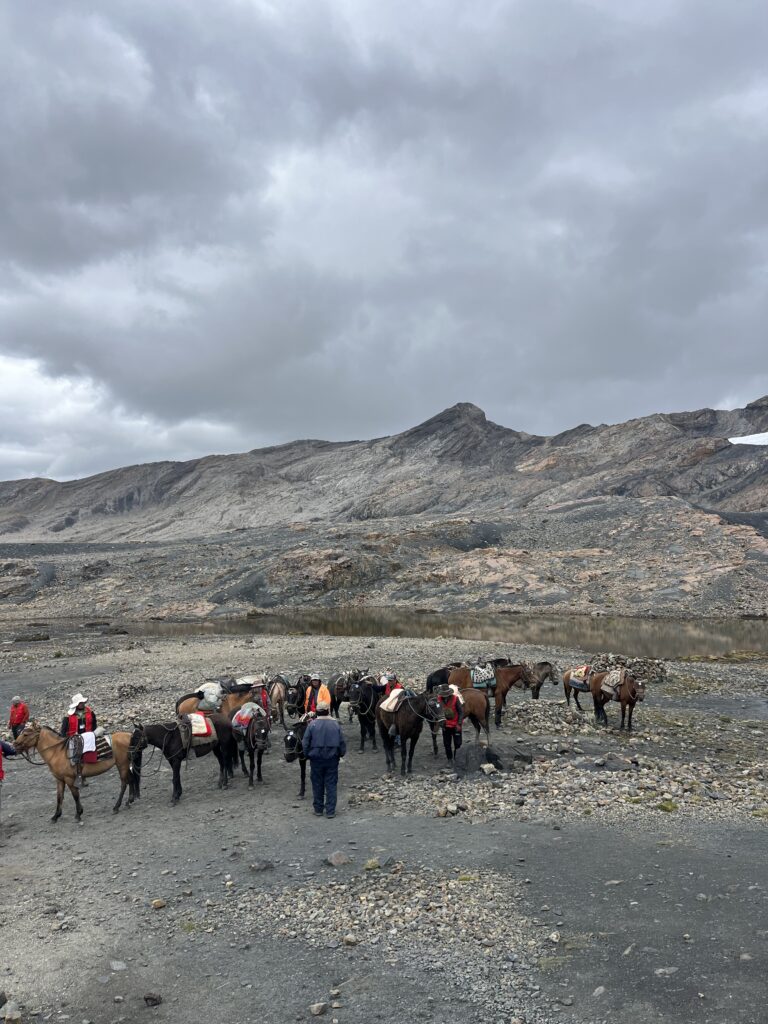
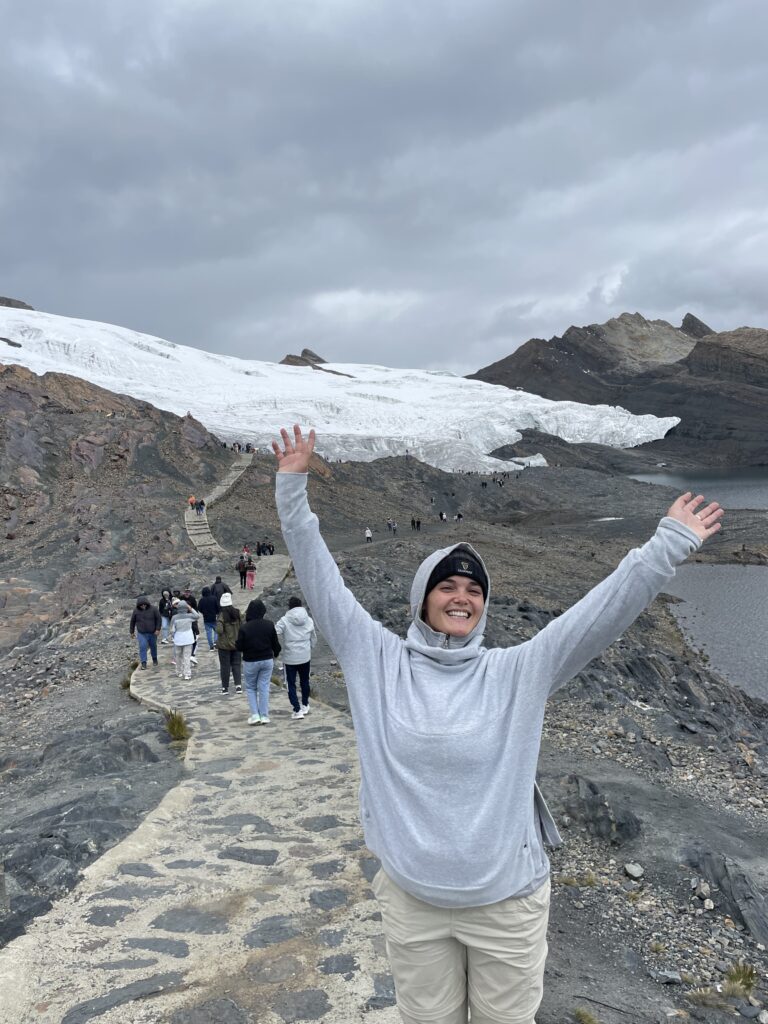
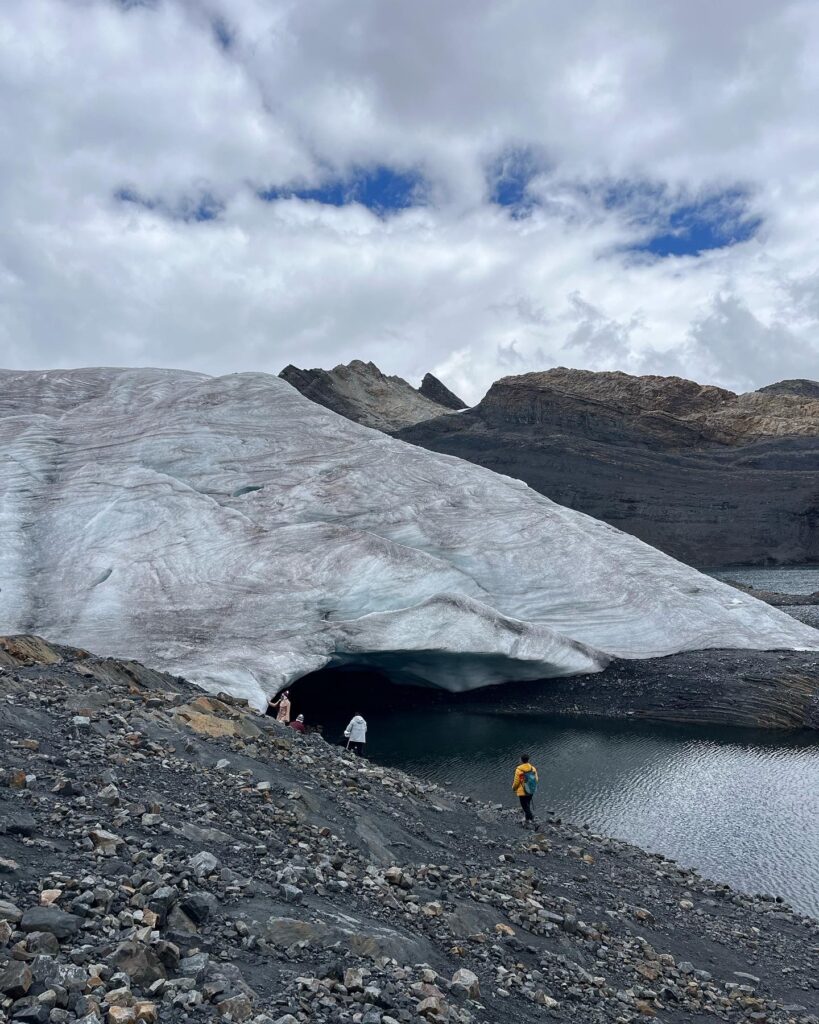
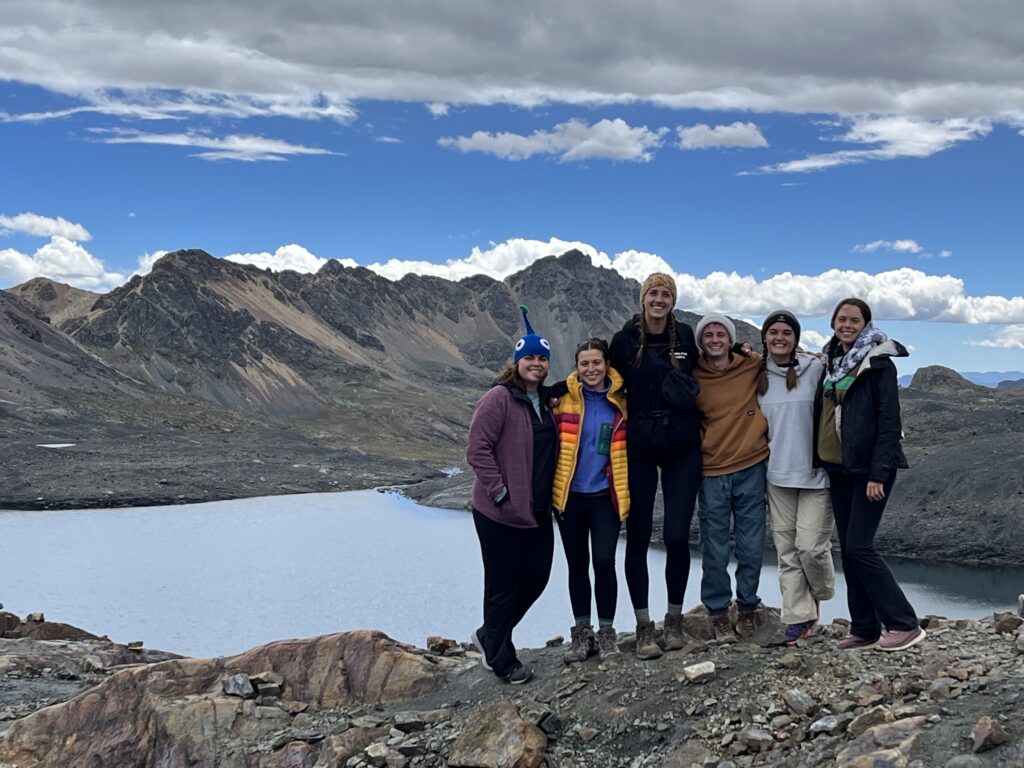
And of course, Pueblo Libre
I certainly cannot write a blog about the beauty of Ancash without including my home, Pueblo Libre. The province where I live, called Huaylas, is defined by two cordilleras, or mountain ranges, separated by the Rio Santo. I live in the Cordillera Negra, named for its lack of snow-capped mountains, while across from me sits the Cordillera Blanca (I’m sure we can figure out the origin of that name). This means that I get an amazing view of the snow-capped mountains across the way. Pueblo Libre has even been referred to as “La Mirador (Viewpoint) de la Cordillera Blanca”. From my house, you get the perfect view of Huascaran, the tallest mountain in Peru (photo 9 below).
I’ve hiked plenty of times around my site, the longest of which being a 6 hour hike up a mountain to another neighborhood (my host cousin told me it would be a 30 minute hike to a waterfall. Not only was the time grossly underestimated, but there was also no waterfall. Nonetheless, beautiful views). My favorite running path takes me above Catucancha, my village, where I stand at the top of a hill huffing and puffing and taking in all the farms, mountains, greenery, and clouds. The top of that hill is my happy place, despite taking lots of mental and physical energy, willpower, and motivation to get there.
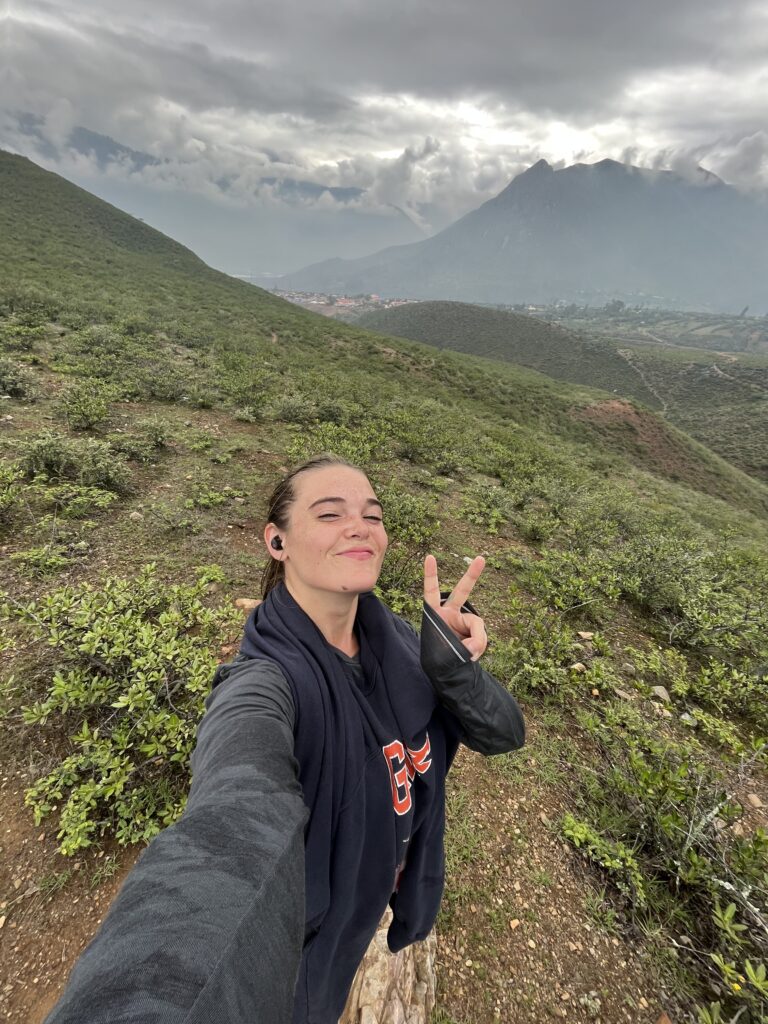
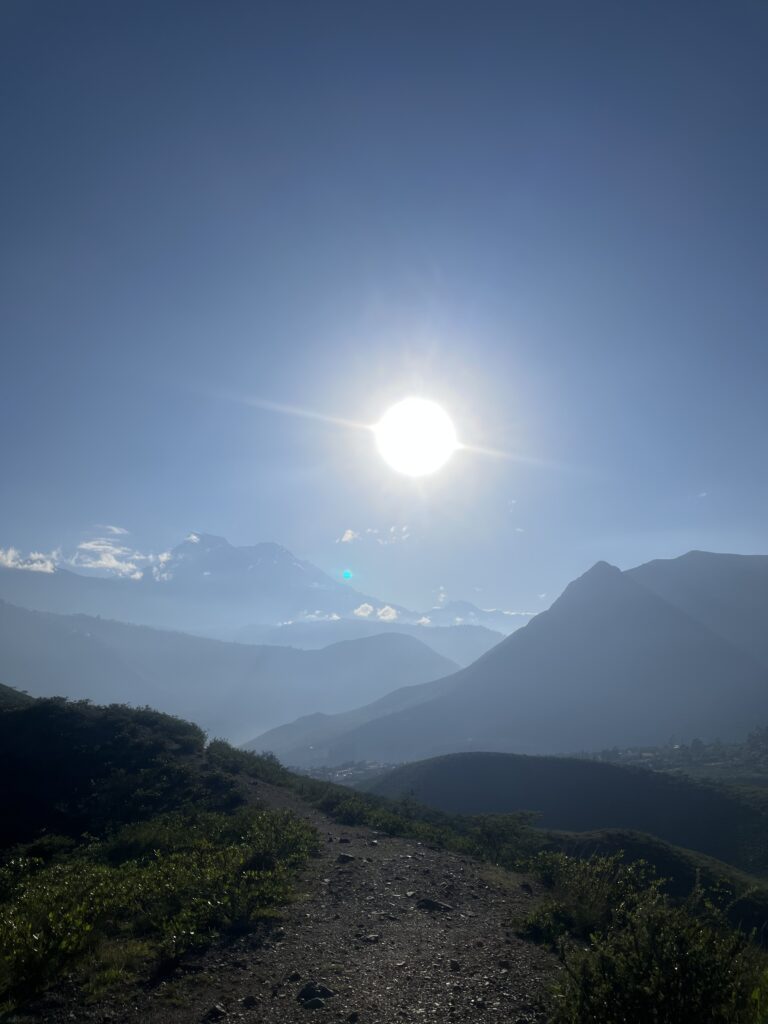
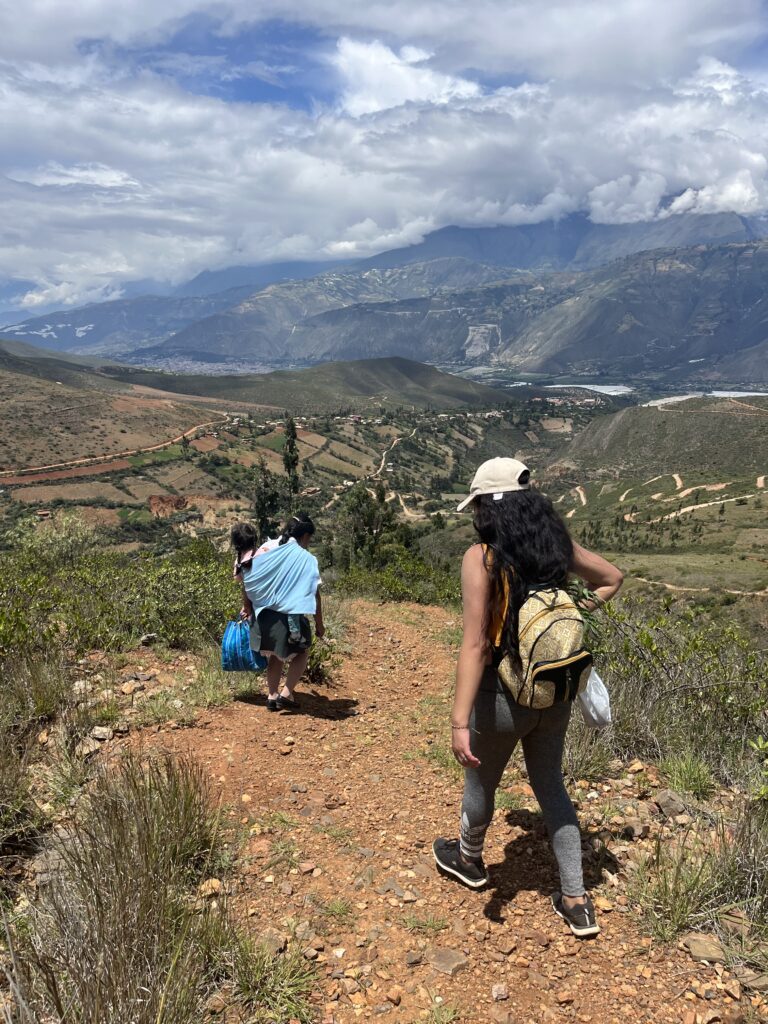
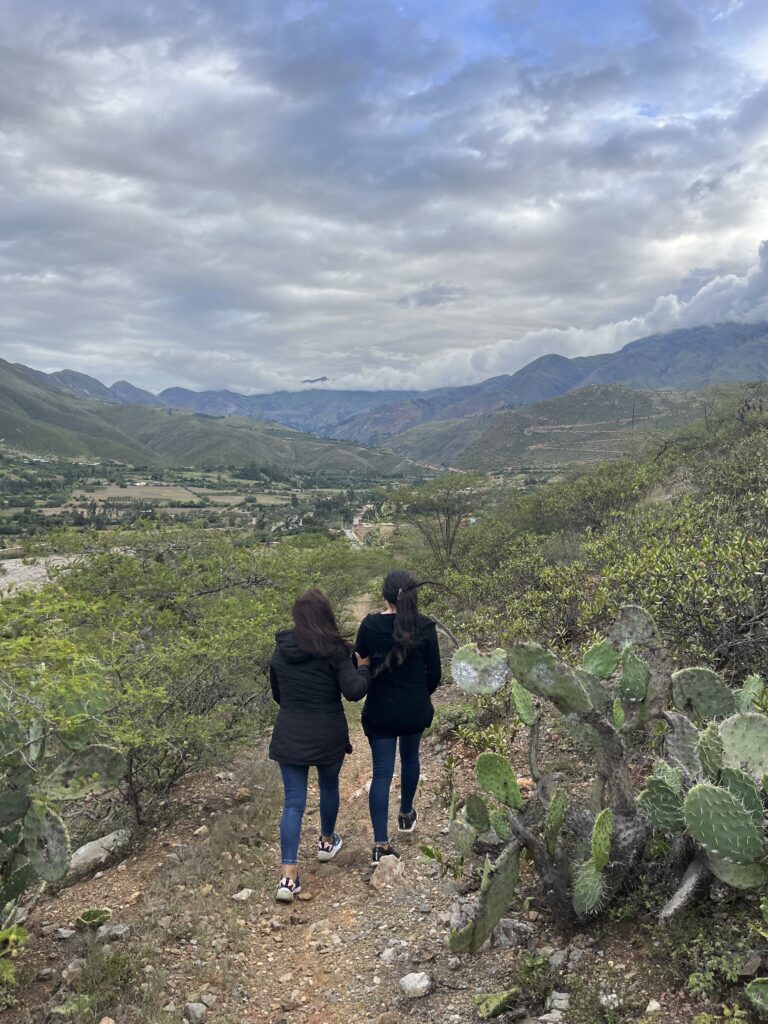
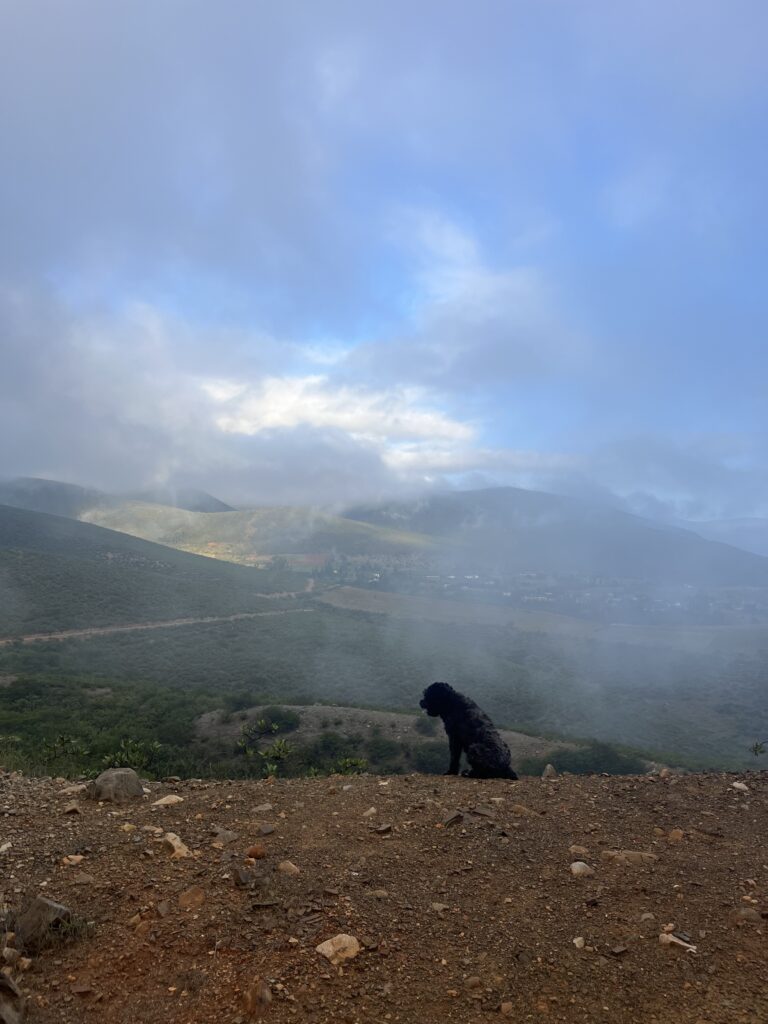
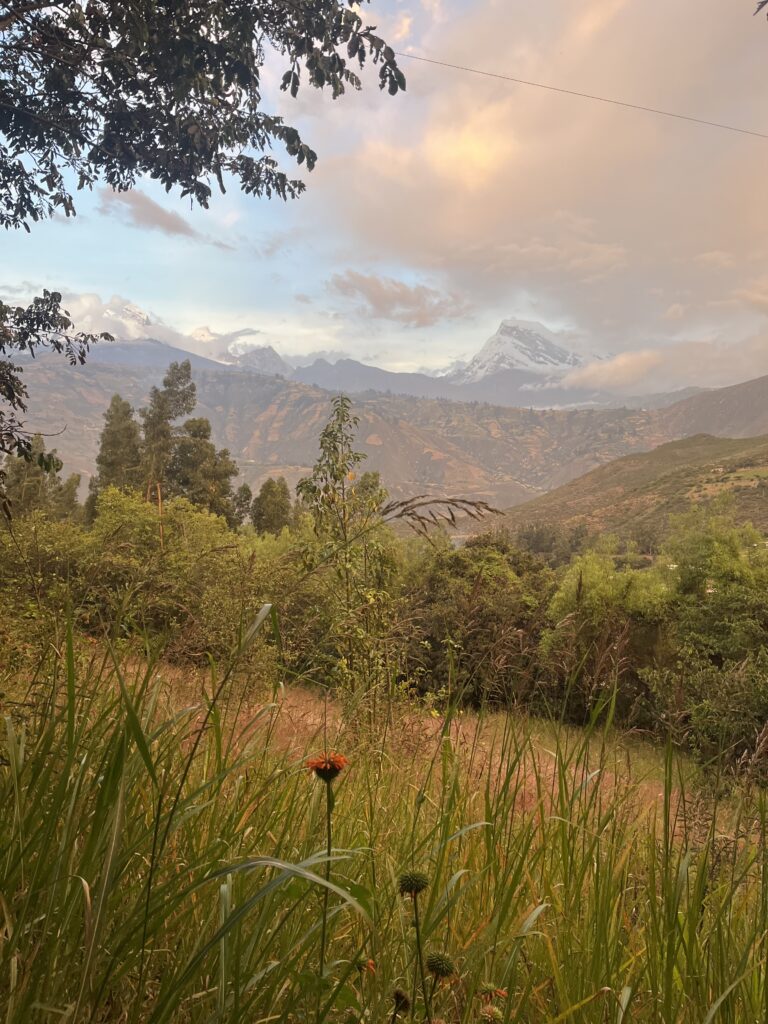
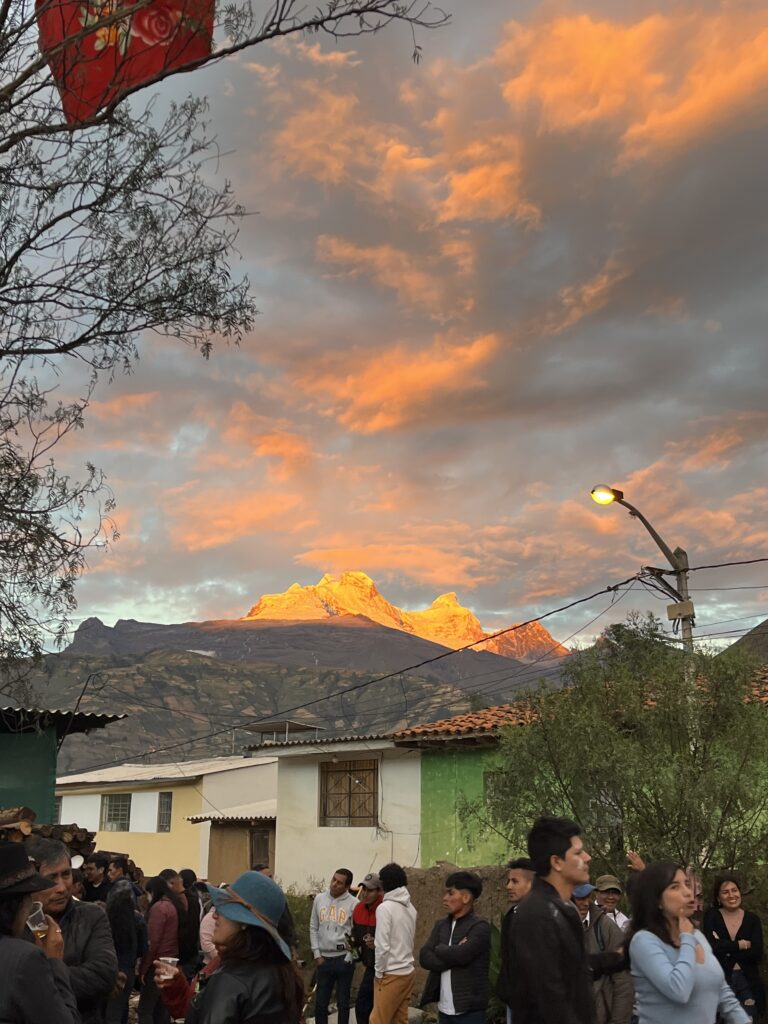
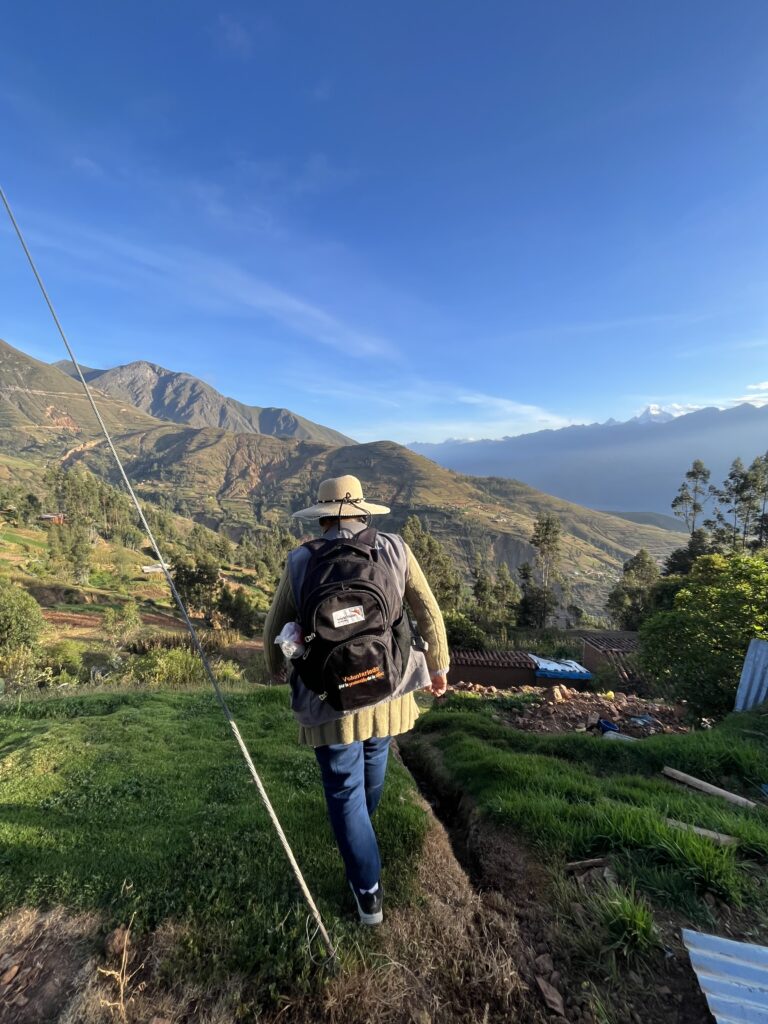
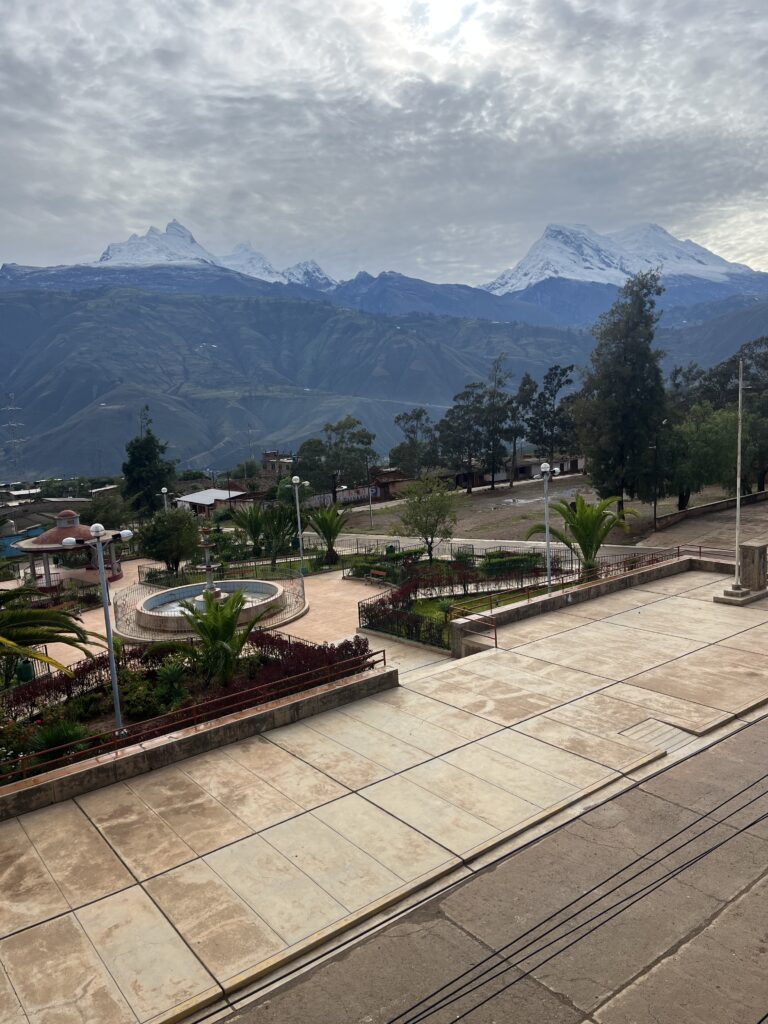
That’s all for now! There are an endless amount of mountains and lakes to explore. Stay tuned.
16 thoughts on “The Beauty of Ancash”
You are so fortunate to be living in such a beautiful area. Breathe it all in. Let the memory last a lifetime.
Breathing in as much fresh air as a can. Things can get interesting, but sitting back and remembering where I am always helps calm the nerves.
Eeeeep so beautiful Lucie!!! I love these pics and descriptions 🙂 Learning so much through you. Can’t wait to join ya on those nevados soon my friend<3
Thank you Kersti! You will fall in love with these mountains. Also did you see my little clif bar shout out 😉
What fun adventures in such a beautiful part of the world!
Adventures indeed!!! Feeling greatful
So pretty omg!! Can’t get over that first pic especially! Can’t wait to come visit you:))
It literally looks fake!!! Can’t even imagine what it’ll look like through your camera lens 😍
Awesome snaps of those mountains!! Thank you for sharing!! Your muscles and lungs must be the strongest they’ve ever been by now!
My lungs are certainly stronger! Hoping that running at sea level will boost my confidence
Oh Lucie, I cannot wait to visit. See you in June!!!!
Ancash awaits you mamasita
I love reading your blog, Lucie! Your voice comes through so naturally and makes it not only interesting but also fun to read!
Thanks Moni!! Just letting the thoughts pour out
Love reading your blog! Keep up the good work! Much love to you!
Thanks Cromer! Love ya #bestteacher